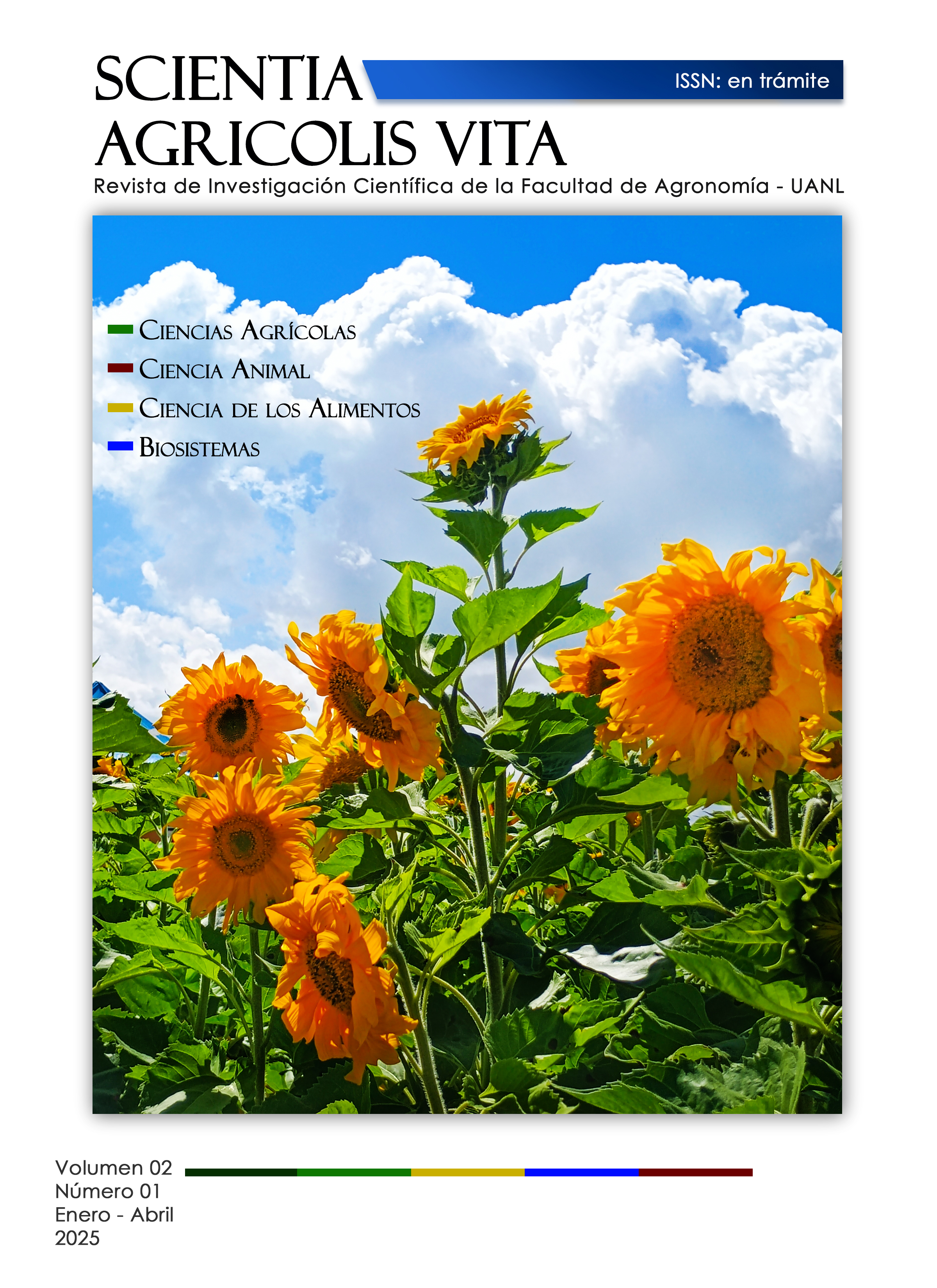Fruit quality and yield of Chocolate habanero pepper (Capsicum chinense Jacq.) in two growing systems
Quality and yield of Chocolate habanero pepper
DOI:
https://doi.org/10.29105/agricolis.v2i1.26Keywords:
Mulch, Grow bag, Greenhouse, Fruit size, Fruit weightAbstract
Although the Chocolate habanero chili (Capsicum chinense Jacq.) has great economic importance due to its pungency and culinary demand, it is little known and cultivated in Mexico. The objective was to evaluate the quality and yield of the Chocolate habanero pepper in the state of Colima. The crop was established in growth bags and mulched soil under greenhouse conditions at a density of 22 311 plants ha-1. Fruit length, diameter, and weight, the number of fruits plant-1, and yield per plant and per unit area were measured. Fruit length, diameter, and weight, as well as the number of fruits per plant-1 and yield were higher when the plant was cultivated in mulched soil compared to the growth bag. It is concluded that the Chocolate habanero pepper showed better quality and yield when grown in mulched soil
Downloads
References
1. Llamas, R. D. D., Chan, C.W., García, L. F. A., and Hernández, O. H. A. (2024). Rendimiento de dos híbridos de Capsicum chinense Jacq. en bolsas de cultivo con fibra de coco. Avances en Investigación Agropecuaria. 28: 43-54. https://doi.org/10.53897/RevAIA.24.28.04
2. Muñoz-Ramírez, L. S., Peña-Yam, L. P., Álvarez-Gil, M. A., Iglesias-Andreu, L. G., Avilés-Viñas, S. A., Canto-Flick, A., Guzmán-Antonio, A., and Santana-Buzzy, N. (2020). Selection of habanero pepper F1 hybrids (Capsicum chinense Jacq.) at the Yucatan Peninsula, Mexico with a high potential for different markets. Agriculture, 10(10): 478. https://doi.org/10.3390/agriculture10100478
3. Ontiveros-Sajuan, M. L., Hernández-Ramos, J., García-Magaña, J. J., Mo-guel-Ordóñez, Y. B., y Herrera-Basurto, J. (2024). Morfometría y rendimiento de Capsicum chinense Jacq. en Arteaga, Michoacán. Revista Mexicana de Ciencias Agrícolas. 15(6): ME:e3763. https://doi.org/10.29312/remexca.v15i6.3763.
4. Ramírez, M. M., Arcos, C. G., and Méndez, A. R. (2018). Jaguar: cultivar de chile habanero para México. Revista Mexicana de Ciencias Agrícolas. 9(2): 487-492. https://doi.org/10.29312/remexca.v9i2.1089
5. Reza, H.R.; Hassankhan, F. and Rafezi, R. 2012. Effect of colored plastic mulches on yield of tomato and weed biomass. International Journal of Environmental Science and Development. 3(6): 590-593. https://doi.org/10.7763/IJESD.2012.V3.291
6. Ruiz-Lau, N., Medina, L. F., and Martínez, E. M. (2011). El chile habanero: su origen y usos. Ciencia. 62(3): 70-77.
7. SIAP. (2025). Anuario Estadístico de la Producción Agrícola 2023. [Consultado el 02 de mayo de 2025]. Disponible en: https://nube.agricultura.gob.mx/cierre_agricola/
8. Tapia-Vargas, M., Larios-Guzmán, A., Díaz-Sánchez, D. D., Ramírez-Ojeda, G., Hernández-Pérez, A., Vidales-Fernández, I., and Guillén-Andrade, H. (2016). Producción hidropónica de chile habanero negro (Capsicum chinense Jacq.). Revista Fitotecnia Mexicana, 39(3): 241-245. https://doi.org/10.35196/rfm.2016.3.241-245
9. Torres, B. A. I., Morales, M. A., Grijalva, C. R. L., Cervantes, D. L., and Núñez-Ramírez, F. (2017). Hierro foliar y acolchado plástico en Capsicum chinense Jacq. infectado con tospovirus. Revista Mexicana de Ciencias Agrícolas. 8(2): 369-380. https://doi.org/10.29312/remexca.v8i2.57
10. Toscano-Verduzco, F.A. (2023). Efecto de la malla sombra y acolchado sobre el rendimiento de Capsicum chinense Jacq. híbrido Megalodon en invernadero. Tesis de Maestría. Universidad de Colima.
Downloads
Published
How to Cite
Issue
Section
Categories
License
Copyright (c) 2025 Wilberth Chan-Cupul, Adriana Juárez-Cuevas, José Manuel Gutiérrez-Campos, Rafael Julio Macedo-Barragán

This work is licensed under a Creative Commons Attribution 4.0 International License.
Scientia Agricolis Vita is published under a Creative Commons Attribution-NonComercial-ShareAlike 4.0 International (CC BY-NC-SA 4.0) licence.




